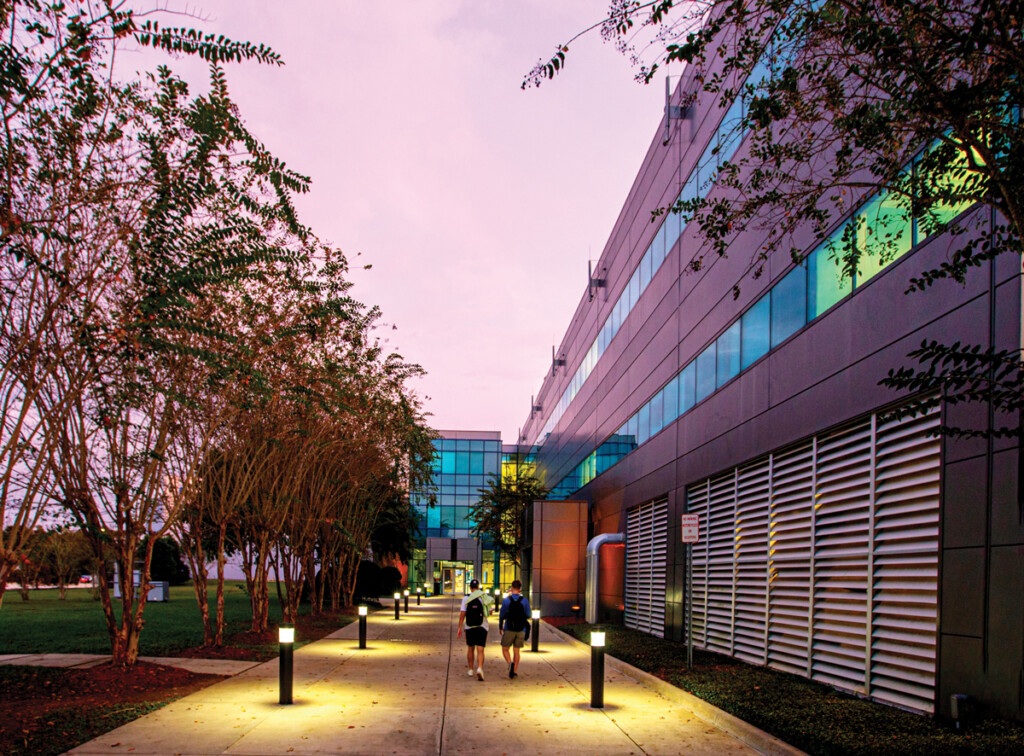Megajoule by Megajoule
Fusion research is generating excitement

British physicist Francis William Aston discovered that the net mass of four hydrogen (4H) atoms is heavier than the mass of a molecule composed of four helium atoms (4He), a stable isotope of helium. The laws of conservation of mass and energy state that neither matter nor energy can be created or destroyed, implying that the fusion of four helium atoms into a single hydrogen atom must net energy; the loss of mass from 4H→4He is energy conversion.
In fact, this energy can be quantified by Einstein’s famous formula, E=mc2. The process by which atoms are heated and compressed with enough intensity to merge nuclei of atoms to form a new element is called fusion. This discovery gave scientists their first clues as to the nature of the stars. The sun, a yellow dwarf, is a gigantic nuclear reactor, containing a hydrogen core, where atoms slam together to form helium. The energy generated by the formation sustains all life on Earth.
The first case of humans recreating fusion in a lab was conducted in 1933 by Mark Oliphant, Earnest Rutherford and their teams. In over 90 years of research, scientists have made great strides toward creating stars on Earth, but one problem has persisted in fusion.
The energy required to fuse atoms nets far less energy than can be produced in a controlled system. This problem persisted until Dec. 5, 2022, when researchers from the Lawrence Livermore National Laboratory (LLNL) in California slammed 192 laser beams into a tiny fuel pellet containing deuterium and tritium. Using inertial confinement fusion, scientists delivered 2.05 megajoules of ultraviolet energy to produce 3.15 megajoules of energy.

Atomic nuclei of hydrogen are combined to generate in a reactor power like that produced by the sun. In employing inertial confinement fusion, scientists have delivered 2.05 megajoules of ultraviolet energy to produce 3.15 megajoules of energy. This groundbreaking success ignited laser-fusion enthusiasts who believe that harnessing the power of nuclear fusion might be the key to providing clean, renewable energy for the foreseeable future. Some scientists, however, doubt whether fusion can effectively be employed on that scale. Photos by iStock / Getty Images Plus: Dragon Claws
Proof of concept now exists. This groundbreaking news ignited laser-fusion enthusiasts around the world. Harnessing the power of nuclear fusion might be the key to providing clean, renewable energy for the foreseeable future, but not every scientist has been taken by the hype.
After a lifetime of studying breakthroughs in the field, Dr. David Larbalestier, the chief materials scientist at FSU’s MagLab, remains cautiously optimistic. He has over three decades of experience in superconducting magnet applications for fusion.
Dr. David Larbalestier, The Chief Materials Scientist at FSU’s MagLab. Photo courtesy of National High Magnetic Field Laboratory
“Limitless energy with relatively low radioactive overhead has been the promise of, the avant-garde of, fusion for 50 years,” Larbalestier explained. “The argument has been that fusion is always 50 years away from being demonstrated.”
This may seem to throw cold water on the LLNL achievement, but when taken into perspective, even the most optimistic observer might understand Larbalestier’s trepidations.
A net production of 1.1 million joules of energy sounds like a lot, but if converted to electrical energy, assuming no loss, this would create 0.3056 kilowatt hours of electricity, enough to power a single 60-watt light bulb for about 5 hours.
There are other logistical problems with using laser fusion as a commercially viable energy source. The amount of energy required to power the 192 lasers is 200 megajoules, on the order of 100 times more energy than actually hits the fuel cell. Laser maintenance and upkeep are expensive but are almost trivial compared to the materials required to produce the energy. Tritium, a primary component of the fuel capsules, is one of the rarest materials in science, costing $30,000 per gram, which might seem a bit steep for a few hours of dim lighting in a single room. As it stands, inertial confinement fusion is likely untenable as an option for powering every household in the world within the next 50 years.
“The most promising way of doing fusion in a controlled fashion is in a Tokamak,” Larbalestier said. Dr. Laura Green agreed.

Dr. Laura Green, MagLab Chief Scientist, a National Academy Scientist and a member of President Biden’s Council of Advisors on Science & Technology (PCAST). Photo courtesy of National High Magnetic Field Laboratory
Greene is the MagLab chief scientist, a National Academy scientist and a member of President Biden’s Council of Advisors on Science & Technology (PCAST). Larbalestier and Greene are in the camp of fusion experts who believe a self-sustaining reaction — like a star — is the most promising way to generate renewable energy.
A Tokamak guides charged particles along a torus-shaped path, using helical and toroidal magnetic fields — or in lay terms, it is a machine that keeps charged particles trapped in a donut shape using magnets. Atoms within the Tokamak fuse, creating heat that is absorbed in the walls of the torus using generators and steam to convert this heat into electricity.
Greene elaborated, “One of the difficulties in the Tokamak is they use magnetic confinement of the plasma. It’s a big geometry materials problem.”
The next biggest challenge with Tokamaks, according to Larbalestier, is that “they are big, they are expensive, and they’ve never had the critical mass of public support behind them.”

ITER (the multinational Tokamak project in Europe ) is an international nuclear fusion research and engineering megaproject aimed at creating energy through a fusion process similar to that of the sun. This photo provides a view of a 30-meter-deep pit, which will house the world’s largest Tokamak. Eighteen supports for the toroidal field magnets are protected in pink plastic. Just inside the circle formed by the supports is a poloidal field magnet. A Tokamak is a machine that keeps charged particles trapped in a donut shape using magnets. Photo courtesy of ITER Organization / EJF Riche
This might be changing now that experimentation with inertial confinement has achieved critical mass in the minds of investors. Greene added that for the first time in decades, the field has “a runway to test out ideas.”
“The next five to 10 years will be critical,” Larbalestier agreed. Despite the hurdles to the commercialization of clean energy, inertial confinement fusion has ignited enthusiasm in the field of fusion, and funding is now open to innovation.
Both Greene and Larbalestier are wary that inertial confinement will become the next LK-99, or room-temperature superconductor of the month. Big promises do not always yield big rewards. Sometimes, they can kill funding in a field altogether, especially when expectation vastly surpasses capability.
Inventing science on a timetable can come at a cost. It seems unrealistic to ask scientists to create a solution to a problem and say, “Have that thing that doesn’t exist yet by next Tuesday for my investor’s meeting,” even if capitalism demands it.
Science is typically advanced in infinitesimal steps, made by a world of contributors spanning generations. Throwing money at any lab is not likely to generate Einstein-like leaps in our understanding of the world’s most challenging problems; however, it can’t hurt.
At worst, it will keep the lights on for the scientists and investigators who require funding for their research. At best, we turn the lights on for the entire human race and maybe save the planet in the process.



